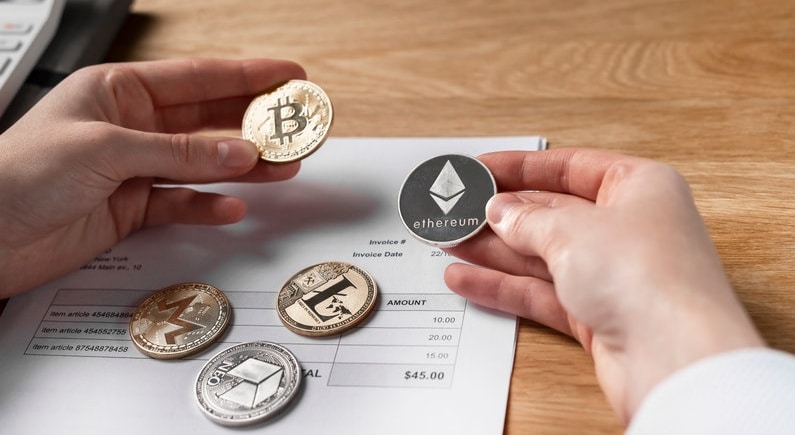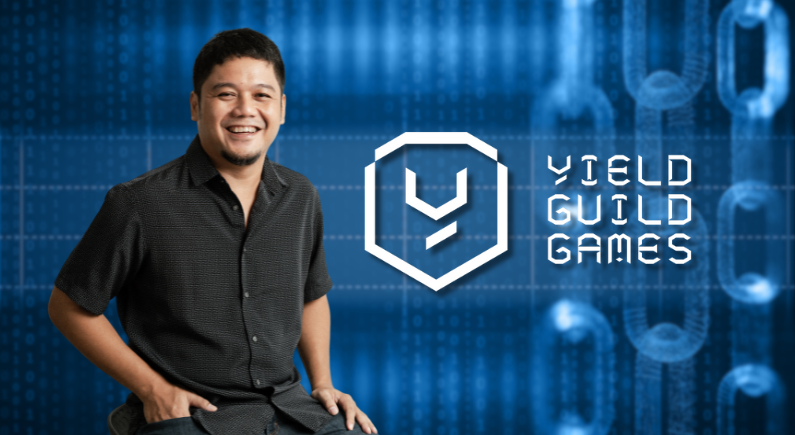Crypto Terms For Beginners Part 1: The Most Important Cryptocurrency Terminology

Have you heard HODL. DApp. Ethereum?
These words have not been taken from an alien language, which has only recently been discovered. On the contrary, cryptocurrency is a language that is ripe with new and interesting terms and is filled with many new and functional concepts.
There is a whole world of cryptocurrency to discover and be a part of that is far from the conventional investing arena and can often be compared to completely different worlds. Even experienced traditional investors are challenged by unfamiliar acronyms, evolving technologies, and the need to keep up with memes and tweets, making it hard to learn the basics.
Before you invest in anything, you need to know exactly what you’re doing to make an informed decision. The fact is even more evident when it comes to an asset like cryptos, which are highly speculative and are still evolving.
@aibcsummit Crypto Terms! #bitcoin #crypto #cryptocurrency #blockchain #fyp #asia #europe #america #africa #ai #blockchaintechnology ♬ Stylish Jazz HipHop – Future Oriented Triad
Altcoins
Alternative Coin is an adjective that refers to any digital currency other than market leader Bitcoin, which many people refer to as an altcoin. However, it is changing that altcoins, such as Ethereum, Litecoin, and Dogecoin, are increasingly being excluded from the definition of altcoins and Bitcoin.
There are currently thousands of cryptocurrencies on CoinMarketCap, and a majority of these will be considered altcoins, with only a few of them being primary cryptocurrencies.
There is a range of altcoins with unique backstories and communities. Some of these items may experience significant price increases over time because they might prove both functional and valuable in the long run. Meanwhile, the negative items might turn out useless, and some may become scams.
Altcoins also use blockchain technology to function, just as Bitcoin does. A blockchain is a digitally distributed database that is simultaneously maintained by many computers from all over the world, sometimes by hundreds or even thousands of them. The blockchain keeps track of all transactions verified and recorded as blocks on the ledger. Transactions can’t be undone once they have been broadcasted to a blockchain.
As mentioned above, many altcoin creators offer unique features to set their cryptocurrency apart from Bitcoin and other cryptocurrencies. Stellar, for example, aims to be faster, cheaper, and more efficient than Ethereum, a leading cryptocurrency that has dominated the industry for several decades.5 Dogecoin was founded in 2013 as a joke and rose to prominence after gaining support from such prominent individuals as Elon Musk.
Decentralized Apps (dApps)
In contrast to conventional ways of developing applications, decentralized applications (dApps) are programs or applications that run through a well-developed peer-to-peer network of computers instead of a single computer. A Digital App (also known as a “dapp”) is an application that exists outside of the purview of a single authority. In addition to DApps, which are built on the Ethereum platform, numerous other applications can be developed, such as gaming, finance, and social media applications.
The standard web application is a computer program that runs on a computer system owned and operated by an organization, allowing the company to have complete control over the program and its functions. One of the benefits of doing business with the U.S is that we have many users on the one side, but a single organization controls our backend.
It is possible to run a DApp on a blockchain or a P2P network. Examples of applications utilizing P2P networks include BitTorrent, Tor, and Popcorn Time. These applications run from computers that are a part of a P2P network in which multiple users are simultaneously consuming content, feeding or seeding content, or doing both simultaneously.
A decentralized application is an app that runs on a blockchain network in an environment that is public, open-source, and decentralized and is thus free of control and interference by a single authority or even a set of holders. In other words, a developer can create a dApp that works like Twitter and put it on a blockchain platform where everyone can contribute to it. People could insert messages. After the message has been posted, anyone cannot delete it, not even the app creators.
Digital Currency
A digital currency is a form of money that can only be accessed through an electronic or digital medium. It is also known as electronic money, digital money, cybercash, or electronic currency.
It is worth nothing to be aware that digital currencies are only available in a digital format and have no physical presence. With a digital currency, transactions are initiated through a computer or electronic wallet connected to the internet or a designated network. The difference between physical and digital currencies can be seen in the fact that a physical currency is tangible, meaning that people can touch, feel, and interact with it daily. Therefore, transactions involving these currencies can only be carried out when the holders of such currencies are in physical possession of the currencies.
There are similarities between digital currencies and physical currencies when it comes to their utility. For example, digital currencies can be used to buy goods and pay for services. Also, they can find restricted use among certain sectors of the Internet community, such as gaming communities, gambling portals, or social networking communities.
It is also relevant to remember that digital currencies also enable instantaneous and seamless cross-border transactions. For example, it is possible for persons located in the United States to send payments in digital currency to their counterparts located in Singapore, as long as they are connected to the same network.
NFTs
There’s a non-fungible token hidden within those quirky artworks, which means that the unique and non-interchangeable unit of data is stored on a digital ledger using blockchain technology to establish proof of ownership through an electronic ledger for tracking ownership. To guarantee the uniqueness of each NFT and to prove whose NFT each has, the same technology or similar technology used for cryptocurrencies like bitcoins and ethers is employed.
Although each NFT is unique, there is no such thing as an exchange of like-for-like, unlike a bitcoin. The additional information stored within this file elevates it from purely being a form of currency and elevates it to something that could probably be used for anything. In this way, NFTs have evolved into highly valuable and collectible digital assets that have value in the same way physical art has value.
It is possible to store any digital file that can easily be reproduced in an NFT to identify the original copy of such a file. It is most likely that the NFTs that you have seen or read about tend to depict futuristic motion artwork, and in fact, NFTs can be made from any format of photography, art, music, or video file. There have even been instances of memes and tweets being turned into NFTs. NFTs can be made from almost anything unique that can be stored digitally and holds value. There’s nothing much different about them than other collector’s items, like a painting or a vintage action figure, except you’re not paying for a physical item but for a digital copy as proof that you have the original one.
Smart Contracts
Based on the type of contract, an intelligent contract is simply a program that runs on a blockchain when conditions are met. By using them, you automate the execution of contracts so that all participants can see the outcome right away without the involvement of any intermediaries. They can also automate a workflow in which a condition is met that triggers the next step.
A smart contract consists of a set of statements that follow simple instructions like “if/when…then…” and is placed on the blockchain. If predefined conditions are met and verified, a network of computers will execute the appropriate actions. As such, the administrator could release funds to the appropriate parties, register a vehicle, send notification messages, or issue a ticket to the appropriate party. When the transaction has been completed, the blockchain will be updated. The result is that no changes will be allowed to the transaction, and only the parties who have been given permission will be allowed to see the result.
There can be as many stipulations within the smart contract to guarantee that the participants are satisfied that the task will be completed satisfactorily. For these terms to be established, participants will need to decide how transactions and their data will be represented on the blockchain, determine if/when…then… rules that govern those transactions, explore all possible exceptions, and define a framework for regulating the dispute resolution process.
In most cases, a smart contract can be programmed by a developer with the help of a template, a web interface, or other online tools that business organizations that use blockchain for business provide to simplify the process of structuring smart contracts.
Gas Fees
This is because, unlike their name, gas fees have nothing to do with either the consumption of liquid fuels or the impact that mining has on the environment. Instead, the reward for putting a transaction into the blockchain, or executing a transaction, is what miners are paying to do. The tip you give a waiter at the end of the meal is like the tip you give to your waiter.
In decentralized blockchain systems, transactions that are added to a network blockchain by anonymous miners and validators are added and validated as they are done. In a sense, this is the basis for any technology-based on blockchain transactions. For example, for a reward of Ethereum tokens, miners solve complex mathematical puzzles to validate transactions in the Proof-of-Work (PoW) system. To earn Ethereum tokens, miners can choose between two approaches. In terms of mining Ethereum, the first option is to get paid in newly created Ethereum tokens. The second is that you will get paid by processing users’ transactions in exchange for Ethereum.
As was already stated, over three thousand decentralized applications (also known as dApps) are available on the Ethereum blockchain, all of which wish to have their transactions included along with all the other Ethereum network users. However, only a finite number of miners can validate the transactions at any one time.
A situation like this forces the miners to select a specific number of transactions they want to validate. However, since the energy cost for miners would be so high, it is not feasible to validate all transactions simultaneously.
Whenever a transaction is left unprocessed, it is stored in something usually referred to as a ‘mempool,’ a combination of memory and pool. In this case, miners can choose which transactions they wish to validate. On top of the base gas fee, users can also add additional gas (priority fee) to the mempool to prioritize their transactions.
The main problem users have with the gas fee is that it fluctuates sporadically throughout the day. Gas fees tend to increase when the number of users on the network increases. In this way, we create an unfair environment where the gas fee you pay keeps on increasing without being able to control it.
Seed
There is a term known as a seed phrase, a sequence of words generated by your cryptocurrency wallet, which allows you access to the cryptocurrency associated with that wallet. In essence, you can think of a wallet as similar to a password manager for crypto, whereas the seed phrase can be thought of as a master password. You’ll have access to all the cryptocurrency associated with the wallet that generated the seed phrase as long as you retain your seed phrase – even if you lose your wallet or delete it.
Whale
Whales are entities and entities that own significant amounts of a particular cryptocurrency, including individuals, institutions, exchanges, and crypto funds. It is important to understand that a whale is an account that holds 1,000 or more Bitcoins, for instance, when it comes to Bitcoin. Pantera Capital and Fortress Investment Group are examples of well-known whales among investors. In addition, it is said that Satoshi Nakamoto mined over a million Bitcoins, which makes him another popular-although widely speculated-whale.
For a minute, the cryptocurrency Ether’s value on Kraken dropped from 1,628 U.S. dollars to 700 U.S. dollars on February 2021. Several factors could have contributed to it, but Kraken chief executive officer Jesse Powell felt that it was a single whale who “decided to dump his life savings,” which led to the plunge. A whale holds a large amount of cryptocurrency, so its movements can influence the token’s value in massive ways. Additionally, they possess more voting power because they have a greater stake in the outcome.
When whales are involved in cryptocurrency manipulation, there are largely two ways in which they do so:
They can create a “sell wall” effect
On occasion, a whale will put up a massive order to sell some of their crypto tokens in a single go. These trades are kept at a lower price than other trades. The cause of volatility is that volatility results in a general reduction of the price of cryptocurrencies. As a result, there is a chain reaction, where people panic and start selling their tokens at a lower price. In turn, this enables whales to purchase more coins at a lower price, allowing them to achieve greater power.
They can capitalize on the fear of missing out (FOMO)
Whales often artificially inflate the token price by placing huge buy orders, which is the opposite of the “sell wall” effect. As a result, the tokens create a desire for the cryptocurrency tokens, thus urging people to raise their bids on the cryptocurrency tokens. Furthermore, by doing so, they also catch the attention of other investors who fear that they might miss a great, profitable investment opportunity. The majority of investors feel that as the popularity of the token has grown, they should also be able to participate in it. Whales can take advantage of this by selling some of their tokens at a decent price to make a decent profit.
Whale investors create a ripple effect, which impacts the other token investors. The price increases and decreases allow them to manipulate the market to their advantage. Therefore, Crypto traders must pay attention to whales’ movements. Engaging in a blockchain analysis will allow you to understand which accounts have high crypto token valuations, following whale alerts on Twitter and other social media platforms, as well as signing up for analytics platforms that can keep an eye on crypto values. Cryptocurrencies are volatile for many reasons. Whaling is one of them. Making sure you account for whales in your buying and selling decisions will enable you to profit.
Proof of Stake
A proof-of-stake consensus mechanism is a cryptocurrency consensus mechanism used to process transactions and create new blocks in a blockchain. The consensus mechanism is a technique for validating entries into a distributed database and maintaining the integrity of the database. A blockchain is a type of database used in the case of cryptocurrency, so the consensus mechanism ensures the security of the blockchain in this case.
Here’s an introductory explanation about proof-of-stake, how it differs from proof-of-work, and why it is different. Also, discover what issues proof-of-stake aims to address within the cryptocurrency industry about the use of proof-of-stake.
This feature of Proof of Stake reduces the amount of computational work required to validate blocks and transactions needed to keep a blockchain secure and thus preserves the security of cryptocurrencies. As a result, Proof of Stake, which relies on the machines of coin owners, changes how blocks are verified. In exchange for their ownership of the coins, the owners can validate the blocks. If someone owns a staked coin, they become a validator.
The block will then be ‘mined,’ or validated, by randomly selected validators. The method uses a random system to determine who gets to “mine” rather than using a mechanism based on competition like proof-of-work.
An owner of a coin must “stake” a specific number of coins to become a validator. In Ethereum, for example, the first 32 ETH needs to be staked before a user becomes a validator.1 Then, the block is verified by more than one validator, and when a certain number of these validators verify that the block is solid, the block is closed and published.
When Ethereum transitions to Proof of Stake, it will use shards for submitting transactions. Other proof-of-stake mechanisms may use different methods for validating blocks. After the shards are verified and a block has been created, two-thirds of the validators must agree that the transaction is valid before the block will be closed. After the block has been closed, the validators will check the data and add it to the shard block, which requires at least 128 validators to confirm.
FUD
Saddington says this is an easy one to do. FUD stands for “fear, uncertainty, and doubt in the cryptocurrency community.” Bitcoin followers advise you to STAY HODLING your coins no matter what FUD you hear from those outside the community.
@aibcsummit Crypto Terms Part 2! #bitcoin #crypto #cryptocurrency #blockchain #fyp #asia #europe #america #africa #ai #blockchaintechnology ♬ Stylish Jazz HipHop (no radio sound) – Future Oriented Triad
Table of Contents
- Have you heard HODL. DApp. Ethereum?
- These words have not been taken from an alien language, which has only recently been discovered. On the contrary, cryptocurrency is a language that is ripe with new and interesting terms and is filled with many new and functional concepts.
- Altcoins
- Decentralized Apps (dApps)
- Digital Currency
- NFTs
- Smart Contracts
- Gas Fees
- Seed
- Whale
- They can create a "sell wall" effect
- They can capitalize on the fear of missing out (FOMO)
- Proof of Stake
- FUD





